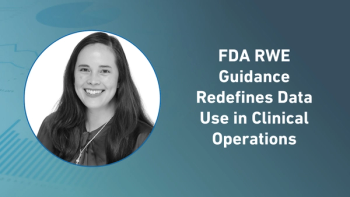
Looking Ahead to Five Years' Smart Drug Development
A prediction by QuintilesIMS consultants states that the industry can look forward to a historically large number and quality of new medicines emerging from the research and development pipeline over the next five years.
The Quintiles-IMS merger last October has spawned some rapid innovations of its own – not least an ambitiously-titled Outlook for Global Medicines through 2021, published at the end of the year by the new company's in-house think-tank, the QuintilesIMS Institute.
This compendium of predictions contains some fascinating figures. Total drug spending will reach $1.5 trillion by 2021 on an invoice price basis, up nearly $370 billion from 2016, it says. This will result from an annual rise of 3% in the total volume of medicines consumed globally, with spending growth driven as high as 7% by newer medicines in developed markets.
In terms of innovation too, the outlook is bullish. "Over the next five years, we expect to see a historically large number and quality of new medicines emerge from the research and development pipeline" writes Murray Aitken, Executive Director of the QuintilesIMS Institute, in his foreword.
"Significant innovations are expected" in oncology, autoimmune and diabetes treatments. The outlook calculates that there are 2,240 drugs in the late-stage pipeline, and an expected 45 new active substances are forecast to be launched on average per year through 2021. Specialty medicines will continue their rise: while they accounted for less than 20% of global spending ten years ago, they will be approaching half of total spending in U.S. and European markets by 2021.
Novel mechanisms of action that tackle underlying disease processes will become increasingly prominent, as will the application of mechanisms already shown effective in one disease to another condition. As the root causes of inflammation and immune response are elucidated, "improved understanding of the underlying mechanisms of diseases plus a coming of age in the development of immunotherapies and targeted therapies will drive a continued wave of innovation," the outlook claims.
Aitken also devotes attention to some of the likely trends in the context of drug development. "We expect that issues of pricing, access and priorities will come to the forefront like never before," he writes. He expands on this thinking with predictions of offsetting increased costs from new medicines with the use of generics, and a greater focus on pricing and access measures.
It expects completely new platforms to see their first human uses of gene-editing technology CRISPR in personalized cancer treatments, and advances in harnessing the microbiome or in regenerative cell technologies, including stem cells harvested from one part of the body to use against a disease in another.
The report alludes to – but does not extensively explore – the challenges that these developments will pose to traditional regulatory approval and commercialization approaches. It points out that dramatic improvements in survival and tolerability will be accompanied by substantially greater levels of clinical trial and real-world information to support treatment decisions, and that payers and providers are developing tools to better assess value and will be more demanding over evidence. But it is precisely in this area that the greatest impact is likely to be felt by the clinical trials community. The proliferation of discussions over the last year on real-world evidence, health technology assessment and the evolution of trial methodology and criteria will make their mark even more insistently in 2017 and beyond. The Quintiles-IMS publication is not intended to provide answers on that. But it is up to the clinical trials community to make its own input to these discussions if it is to avoid finding itself the victim of change that it has not been consulted on.
Newsletter
Stay current in clinical research with Applied Clinical Trials, providing expert insights, regulatory updates, and practical strategies for successful clinical trial design and execution.



